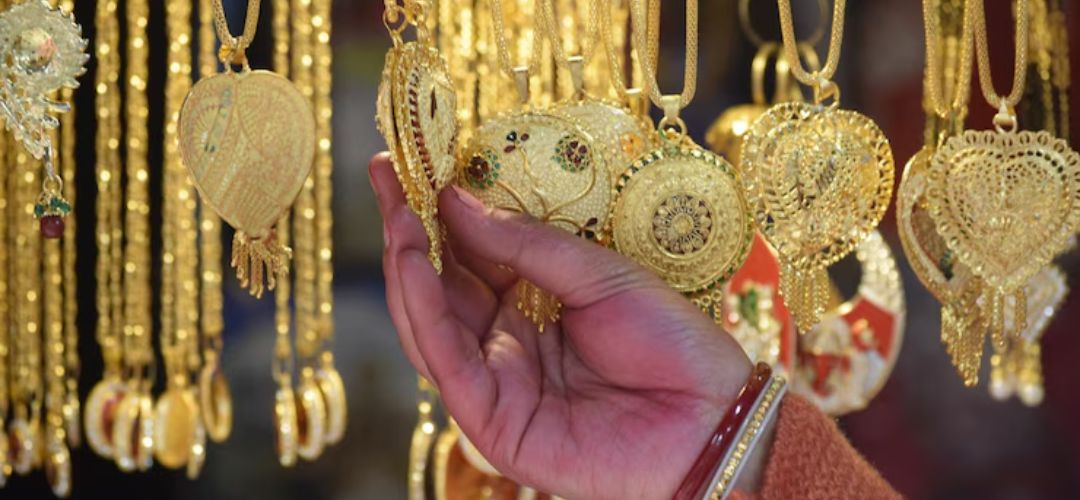Timeless Traditions: The Cultural Brilliance of Hindu Jewelry

When you think of India’s vibrant culture, the mind instantly conjures images of color, celebration, and craftsmanship. Among its many ancient art forms, Hindu jewelry stands out as one of the most intricate and symbolic expressions of India’s heritage. More than just adornment, Hindu jewelry reflects a deep intertwining of religion, tradition, and social customs. Each piece tells a story—of the wearer, the deity it may honor, and the region it represents.
In this blog, we explore the origins, meanings, styles, and evolution of Hindu jewelry, and why it continues to captivate hearts across the world.
A Legacy of Devotion and Beauty
Hinduism is one of the world’s oldest religions, and its influence on jewelry is profound. For centuries, jewelry has played a crucial role in religious ceremonies, festivals, weddings, and rites of passage. But beyond aesthetics, Hindu jewelry carries spiritual energy and sacred symbolism.
Each item is more than an ornament—it’s often considered an offering to the gods, a representation of divine protection, or an expression of one’s spiritual path. For instance, gold is considered pure and auspicious in Hindu belief, which is why it’s commonly worn during religious events and weddings.
The Symbolism Behind Every Sparkle
What makes Hindu jewelry truly extraordinary is the depth of meaning infused in every design. From sacred motifs to astrological influences, every element is intentional.
- The Mangalsutra: This black-beaded necklace is not just a marital symbol but is believed to protect the husband’s life. It’s often gifted to the bride by the groom during the wedding ceremony.
- Toe Rings (Bichiya): Typically worn by married women, these silver rings are not only symbolic but are also believed to regulate the menstrual cycle and increase fertility by pressing acupressure points.
- Maang Tikka: Worn on the forehead at the sixth chakra (ajna), the maang tikka symbolizes the union of male and female energies. It’s often adorned during weddings and religious occasions.
- Nath (Nose Ring): Traditionally worn on the left nostril, which is linked to reproductive organs in Ayurvedic medicine, it is thought to ease childbirth. The nose ring also has regional and caste-related significance.
Regional Styles: A Diverse Tapestry
India’s vast cultural diversity gives rise to distinct styles of Hindu jewelry across states and communities. Here are a few regional styles that showcase this amazing variety:
- South India: Known for temple jewelry crafted in gold and embedded with rubies, emeralds, and pearls. These pieces were originally designed for deities and temple dancers. Today, they are an essential part of South Indian bridal wear.
- Rajasthan and Gujarat: Renowned for oxidized silver jewelry, often featuring bold, tribal designs and mirror work. These pieces reflect the nomadic and warrior heritage of the region.
- Maharashtra: The Kolhapuri saaj and nath from Maharashtra are unique in design. The saaj is a necklace composed of multiple pendants symbolizing various Hindu gods.
- Bengal: Known for finely crafted gold jewelry, particularly in filigree work (tarakashi). Bengali brides often wear a traditional shankha pola—white and red bangles made from conch shell and coral.
- Kashmir: Intricate silver pieces, often adorned with turquoise and red stones, reflect Persian and Central Asian influences on Hindu jewelry in the valley.
Jewelry for the Gods
Hindu deities themselves are adorned in resplendent jewelry. Visit any temple, and you’ll see idols bedecked in gold, silver, and gem-studded ornaments. These are not just decorative; they are acts of devotion. Priests dress the idols daily, using jewelry to denote the deity’s role, power, and mood.
Take Lord Krishna, for example—his image is often enhanced with peacock feather crowns, flute-shaped pendants, and anklets. Goddess Lakshmi, the embodiment of wealth and prosperity, is always shown wearing lavish gold ornaments, symbolizing abundance and divine grace.
Jewelry and the Hindu Wedding
One of the most significant stages of life in Hindu culture is marriage, and jewelry plays an integral role. Brides are adorned with specific pieces that serve as both social and religious symbols. A traditional Hindu bride wears:
- Necklaces (often layered in gold or kundan)
- Bangles (representing prosperity and marital happiness)
- Earrings, maang tikka, nose rings, and anklets
- Armlets (called bajuband)
- And of course, the sacred mangalsutra
Each item is carefully chosen for its spiritual resonance and is often passed down through generations.
The Artistry of Craftsmanship
The creation of Hindu jewelry is a time-honored art, involving generations of craftsmen. Techniques like kundan, meenakari, and jadau are still practiced today:
- Kundan: A method of setting gemstones in pure gold foil. It originated in Rajasthan and is famous for its regal look.
- Meenakari: Enameling technique used to color jewelry, often seen in both gold and silver pieces.
- Jadau: Introduced by the Mughals but widely used in Hindu weddings, jadau involves embedding uncut diamonds and gemstones without the use of glue.
These traditional methods ensure that Hindu jewelry remains both timeless and luxurious.
Evolution with Modern Times
While rooted in tradition, Hindu jewelry has evolved. Modern Indian women often blend traditional pieces with contemporary fashion. Oxidized jhumkas with jeans or mangalsutras redesigned into elegant pendants reflect a shift in cultural expression.
Brands today offer collections that keep the sacred motifs but make them wearable for daily life. Temple jewelry now appears in minimalist forms suitable for office wear. Global fashion runways are also embracing the aesthetic of Hindu jewelry, integrating bindis, chokers, and headpieces into their designs.
Spiritual and Astrological Significance
Another layer to Hindu jewelry is its alignment with astrology. Navratna jewelry, which incorporates nine gemstones corresponding to the nine celestial bodies in Vedic astrology, is worn for protection and balance.
Each gem—ruby, pearl, red coral, emerald, yellow sapphire, diamond, blue sapphire, hessonite, and cat’s eye—has a planetary influence. It’s common for individuals to consult astrologers before choosing a gemstone to wear, especially for rings and pendants.
The Economic and Emotional Value
For many Hindu families, jewelry is a treasured investment. Gold holds significant financial value and is considered a safe, liquid asset. It’s also gifted during important life events such as births, weddings, and housewarmings.
But perhaps even more valuable is the emotional and cultural wealth Hindu jewelry carries. Heirloom pieces passed down from grandmother to granddaughter are stories etched in metal and stone—stories of family, heritage, and faith.
Final Thoughts: A Living Tradition
Hindu jewelry is not just something to be worn—it is something to be experienced. Whether it’s the spiritual resonance of a mangalsutra, the cultural pride of a jadau choker, or the divine beauty of temple-inspired earrings, each piece continues to connect generations to their roots.
In a fast-changing world, this jewelry remains a touchstone—reminding us of who we are, where we come from, and the divine light that guides us.
Have you ever worn a piece of Hindu jewelry or received one as a gift? Share your story or ask your questions in the comments below. Let’s celebrate these timeless treasures together.






